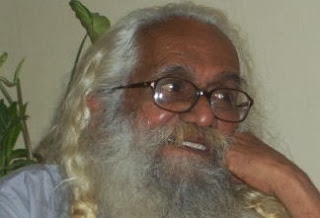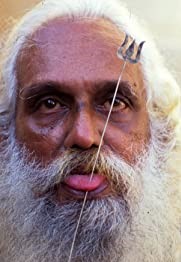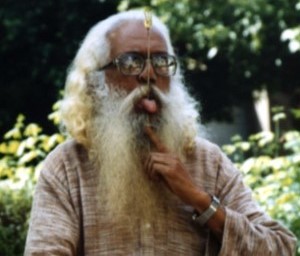
In his attack on Professor Tulasi Srinivas (entry no. 2 on this site), Gerald Joe Moreno correctly observed that she cited me as “a biographer of Shirdi Sai Baba” (Srinivas, Winged Faith, p. 354 note 24). Moreno was averse to this favourable reference; he insisted upon describing me as “a vanity self-publisher who admitted he is not an academic.” His phraseology is deceptive. I did not need to make any admission, never having posed as an academic. Moreno himself was not an academic; furthermore, he had no books to his credit.
In the same attack feature, Moreno identified me as “a malicious critic of Sathya Sai Baba who has ridiculously accused the Guru of being ‘closely allied with terrorists’ and who fanatically accused Moreno [third person] of being an ‘internet hit man’ and an ‘internet terrorist’.”
Now that criticisms are being aired to millions in many countries by the BBC and Danish television documentaries (The Secret Swami and Seduced), the Sai Baba forces are desperate to denigrate and vilify those who speak out against them. (Premanand, Reply to Mr. Gerald Moreno, exbaba.com, Search tab)


He has spent the last forty years investigating miracles and, after witnessing 1,146 of them, he has yet to see one he can’t duplicate through natural methods…. He leads an army of sceptics in ongoing investigations of India’s many god-men. He has been jailed and beaten, his life has been threatened, and his car sabotaged. India’s god-men [primarily Sathya Sai Baba] wield great political power, and number high government officials (including Supreme Court justices) among their followers. (Oscar Gunther and Brian Siano, Premanand: Guru Buster, 1994, exbaba.com)
Premanand also revealed that poor devotees of Sathya Sai received “miracle” holy ash, while the wealthy supporters acquired Rolex wristwatches, diamond necklaces, and Parker pens made in America. All these items were palmed via sleight of hand, in the deceptive manner called “miracles” by Sathya Sai Baba. The miracle beliefs thrived on crass superstition. Even some scientists were deceived by “miracles,” adopting a devotee view of the infallible guru.
Sathya Sai and his Trust received huge donations for charity, while spending too much on “wasteful flagship projects,” to use one description of ex-devotee Robert Priddy. Costly new buildings annually appeared at the ashram, while the guru claimed that he had no property or worldly goods. He charted private passenger jets for VIPs at the Sathya Sai Airport, commenced in 1990 at Puttaparthi (he was not an ecological trendsetter). Sathya Sai enjoyed being driven in expensive motor cars maintained for him at the ashram, including a Jaguar and a Mercedes (he would often journey to Bangalore, site of a second ashram at nearby Whitefield).
The ex-devotee David Bailey, in an online document The Findings, revealed many of the discrepancies at Puttaparthi. For instance, he reported that the ceiling of a prominent mandir (temple) was covered in gold leaf. Bailey queried the contrast with a landscape of dire rural poverty. He also informed that this temple had acquired 167 chandeliers instead of the original 36.
Devotees frequently made much of the charitable projects associated with Puttaparthi; the anomalies were ignored. Bailey investigated the Sai Baba Water Project, which claimed to benefit 750 villages with money obtained from elaborate fund-raising. He discovered that the grand claim was false. Only a relatively small number of villages, plus Puttaparthi ashram, gained a water pipeline. A Telegu newspaper, of the 1990s, accordingly stated: “Sai Baba, where is our water? You have cheated us again!”
Any mention of deficiencies was interpreted by Gerald Joe Moreno in terms of conspiracy and groundless allegation. After the deaths of both Moreno and Sathya Sai, the private hoard of the guru was revealed in two different locations, including substantial wealth and over seven hundred “renunciate” robes of the type he liked to wear. The guru’s following then became notorious for squabbling over the economic endowments of Puttaparthi ashram. Rationalist critic Sanal Edamaruku complained that the private hoard was not accounted for, amounting to “black money.” The Sathya Sai Central Trust nevertheless claimed to own the hoard, while relatives of the guru protested at events controlled by the Trust.
The Murders book of Premanand includes many details. The Sathya Sai Airport cost one and a half billion rupees, being constructed at Puttaparthi by the Indian Airport Authority (IAA). Rarely used, the facility is described as being of a private character. Another source informs that Sathya Sai persuaded the IAA to finance the project, saying they would earn 10 lakhs of rupees the first year. This prediction transpired to be totally wrong. The Airport was largely unused for years before the first commercial flight. The occasional VIP arrived at the ashram by private jet. The Sathya Sai Central Trust “apparently ended up owning” the new airport (White Elephant for Sale).
In 1998, at a hotel near the Sathya Sai Airport, a tragic collective suicide occurred. This was reported by Premanand. The event is viewed as confirmation of the danger in extremist devotee attitudes. Ramesh (aged 42) was a multi-millionaire industrialist and a devotee of Sathya Sai. He was found dead with seven other family members lying unconscious on the floor, plus his daughter who had died of a brain tumour a day earlier. Only one of these people survived. Police concluded that they died of shock at the daughter’s death, having expected Sathya Sai to miraculously save her. Ramesh left a note saying: “I myself have influenced all the members [of my family] to commit suicide to become one with Sai Baba…. All our properties have to be transferred to the Sathya Sai [Central] Trust.”
The same extensive Murders book refers to a legal petition, dated 1994, via the lawyer K. N. Balgopal (advocate for Premanand). This document reported that an Australian lady was murdered in her room at the Puttaparthi ashram in 1993. “The entire incident was hushed up.” The victim was a member of the Sathya Sai Central Trust, being connected with an ousted secretary of that divided body. Trust members were here accused of misusing funds and indulging in illegal activities. Some Trust members were also accused of using local thugs to murder foreign devotees and burn the faces of corpses beyond recognition. “A foreigner was raped at the ashram by a Trust member, but the police hushed up the case” (Excerpts from B. Premanand’s book, online at exbaba.com).
Another source reported that, in 1992, a woman was killed and dismembered in her room at Puttaparthi village (Testimony from David Paul, exbaba.com). David Paul became a devotee in the early 1980s, and visited Puttaparthi in 1992. A related episode, more well known, is that of a man whose stomach was cut out while he was still alive. These grim events at Puttaparthi are inseparably associated with the goondas (thugs) goaded on by the Sathya Sai Central Trust.
Premanand reported that his son was murdered by Sathya Sai goondas in a hospital at Bangalore. These thugs also threatened his brother. The home of Premanand was repeatedly burgled by these agents of violent intrigue. They stole compromising documents on Sathya Sai, also related memoranda in the form of photographs and DVDs. A major obstruction to justice was Bhagwati, the Supreme Court Judge, who was conveniently a member of the Sathya Sai Central Trust. All complaints and legal procedures were blocked by the Puttaparthi mafia.
Kevin R. D. Shepherd
October 2013 (modified 2021)
ENTRY no. 3
Copyright © 2021 Kevin R. D. Shepherd. All Rights Reserved.

